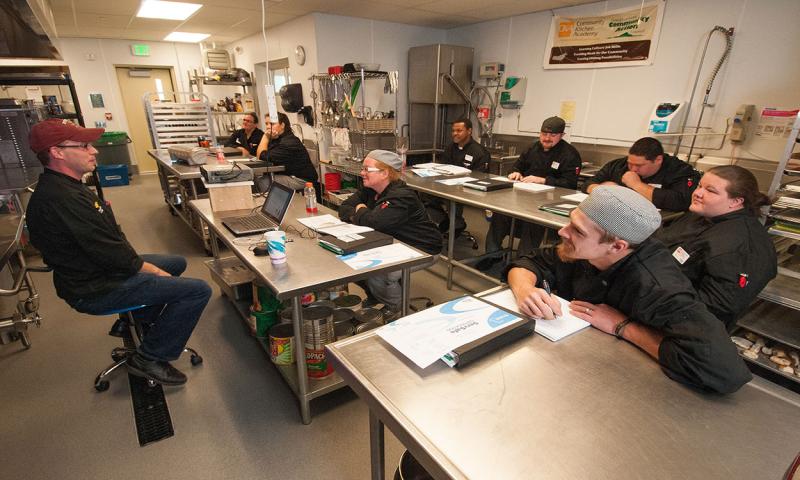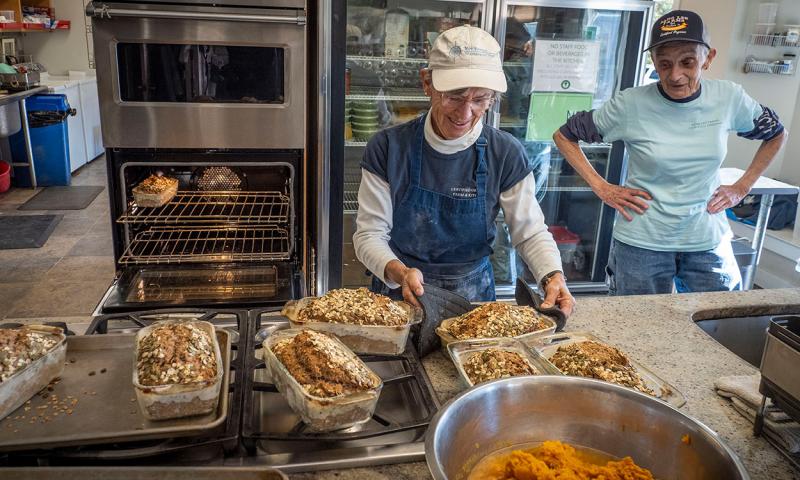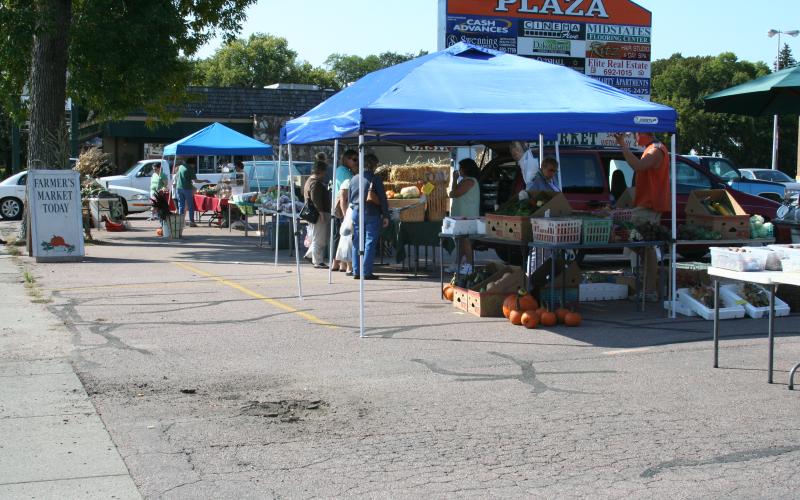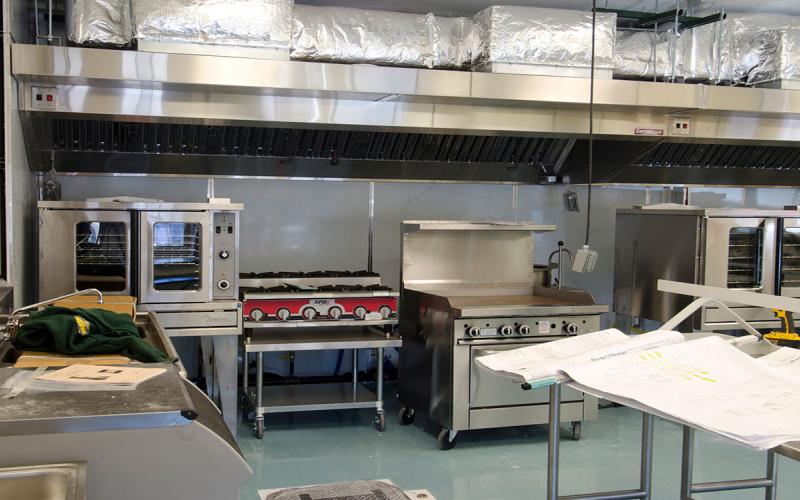
Licensed Kitchen Overview
There is increasing interest for food entrepreneurs to sell foods to retail establishments or storefronts, which can trigger the need to process food out of a licensed kitchen. When a food entrepreneur decides to take the opportunity to expand from selling foods at the farmers market or from their residence, to selling to retail or store fronts, this often leads food entrepreneurs down the path of looking for a licensed kitchen or building a licensed kitchen.
This article will seek to clarify the process on how a kitchen can become licensed by the South Dakota Department of Health (SD DOH), and it will also aide food entrepreneurs in knowing how to find a licensed kitchen. This article will describe the three processes for licensing a kitchen.
Licensed Kitchen Definition: A licensed kitchen can be understood by the South Dakota Legislature 44:02:07:01 (36) as a food service establishment that has been licensed by the SD DOH, which authorizes a person or persons to operate the food service establishment. A food service establishment can further be defined in SD codified law 34-18-1 (5).
Licensed Kitchen Processes
Follow the links below to jump to in-depth discussions on the three major licensed kitchen processes and view some frequently asked questions about licensed kitchens.
- Process 1: Build a new licensed kitchen.
- Process 2: Find an existing licensed kitchen.
- Process 3: Find a kitchen/location and apply to get it licensed.
- Frequently Asked Questions
Process 1: Build a new licensed kitchen.

The process for building a licensed kitchen in South Dakota can be summarized by the following steps. In each step, there will be additional information regarding the specific step.
- Fill out the SD DOH Food License Application and submit it to the SD DOH.
- Fill out the Food Service Plan Review Questionnaire and provide a Floor Layout, then submit it to the SD DOH.
- Complete a Certified Food Service Manager course to become a certified food service manager or perform equivalent food safety training and product testing/evaluation as dictated by the SD DOH.
- SD DOH reviews documentation.
- The SD DOH performs an onsite inspection to determine compliance to Food Service Establishments Health and Safety Manual – Administrative Rules of South Dakota 44:02:07 (Food Service Code).
- The SD DOH Issues a food service license.
Step 1: complete the Application
Fill out the SD DOH Food License Application and submit it to the SD DOH.
-
The South Dakota Department of Health Food License Application form (SD DOH Food License Application) is a document that provides the SD DOH with specific information about the establishment such as:
- Location of establishment.
- Who is the Certified Food Service Manager.
- Proposed opening date.
- Type of Service (examples: bakery, catering, convenience store, retail, others).
- Seating capacity.
- Fees.
-
Other miscellaneous information.
-
This form needs to be filled out, signed (notarized), and returned to the SD Department of Health Office of Health Protection (600 East Capitol Ave., Pierre, SD 57501-1700) along with the license fee, with all checks being made out to the South Dakota Department of Health. This form would also need to be submitted 30 days before completion of construction. The license, which is issued by the SD DOH after the establishment has been approved, expires on December 31 each year.
Step 2: Complete REquired Paperwork
Fill out the Food Service Plan Review Questionnaire and floor layout and submit to the SD DOH.
-
The (Food Service Plan Review Questionnaire) includes questions about the type of food that will be made and/or served out of the facility, as well as specific questions around the sanitary design and construction of the facility. If a processor is planning on constructing their own kitchen, they would need to fill out the Food Service Plan Review Questionnaire as well as the proposed floor plan. The proposed floor plan would need to be submitted 30 days prior to construction beginning and would need to be stamped by a professional engineer or architect for facilities larger than 4,000 square feet. If the water and sewer systems are private, the South Dakota Department of Agriculture and Natural Resources would need to approve the water and sewer systems.
-
Many of the questions on the Food Service Plan Review Questionnaire aim to understand the sanitary design of the facility, as well as understand the sanitary design of the materials used for construction of the facility. The SD DOH has put together a Food Service Establishment Guideline, which cites specific food service codes as it relates to sanitary design, water sources, and GMPs. Below are a few examples:
-
Layout Plan: Layout plans must be submitted to the Department of Health for approval at least 30 days prior to the beginning of any new construction or major renovations. Plans should be drawn to a recommended scale of ¼ “ = 1 foot. Any new or extensively renovated food service establishment which is more than 4000 square feet must have layout plans that are stamped by a professional engineer or architect. No food service license will be issued without the approval of the floor plan. SDCL 34:18:23.
-
Private Sewer Systems: Private sewer systems, which serve a food service establishment, must be approved by the South Dakota Department of Environment and Natural Resources (DENR). Prior to submitting a food service license application, prospective owners/operators must contact the DENR at 605-773-3351 or 605-773-3651 and provide the necessary information as required by the department for a complete review of the sewer system. Food service establishments utilizing private sewer systems must have the system approved bythe DENR. ARSD 44:02:07:65.
-
Water Supply: All private drinking water supplies must be of a safe, sanitary quality and from an approved source. Water samples must be submitted to an EPA-certified laboratory on a monthly basis and must meet minimum drinking water standards, Chapter 74:04:05 of DENR Administrative Rules. The test results from these samples must be provided to the Health Protection Program. Sample bottles may be secured from the State Health Laboratory by calling 605-773-3368. There is a fee for each sample analysis. ARSD 44:02:07:64.
-
Floors, Walls, and Ceilings: All floors, walls, and ceilings shall be constructed of smooth, nonabsorbent, and easily cleanable material. Carpeting cannot be used as a covering in kitchen areas, utensil-washing areas, food storage areas, or in toilet rooms around urinals or toilet fixtures, nor can floors be covered with sawdust or compound during regular operating hours. All floor wall junctures should be covered and sealed. Walls in kitchen areas should be light-colored. Concrete, brick or pumice blocks used for interior wall construction shall be finished and sealed to provide a smooth, flat, easily cleanable surface. Wood paneling or wallpaper is not approved as a wall covering in kitchen or utensil-washing areas. Acoustical tile materials used for ceiling shall be free of perforations and fissures or other indentations and must be non-absorbent and easily cleanable. A one-hour rated fire retardant wall must be provided behind the cooking area (5/8 inch fire-retardant sheetrock on both sides of the wall is equivalent to one hour requirement). ARSD 44:02:07:76 and 77.
-
Exhaust System: All kitchen equipment producing smoke, steam vapors, or excessive heat must be covered by an exhaust system, which includes metal filters for collection of grease that are readily removable for cleaning and replacement if not designed to be cleaned in place. All hood ventilation systems must be vented directly to the outside. Some types of equipment requiring exhaust systems, including grills, fryers, stoves, dish machines, steam kettles, broasters, pizza ovens, etc. Ventilation systems shall be designed and installed according to the following codes: 1994 Uniform Building Code, 1994 Uniform Mechanical Code and 1991 National Fire Protection Association (NFPA 96), and, when vented to the outside, shall not create an unsightly or harmful discharge. Hood systems shall extend a minimum of 6 inches over all sides of the cooking equipment. Variations in hood systems must be approved by the Health Department or the State Fire Marshall (605-773-3562). Hood systems over equipment that develops open flames during cooking or uses hot cooking oil for frying shall be equipped with a fire extinguishing or ansul system. ARSD 44:02:07:49 and 79.
-
Equipment: All equipment shall be designed and fabricated for durability under conditions of normal use and shall be resistant to denting, buckling, pitting, chipping, and crazing. All equipment shall be easily cleanable. Equipment requiring disassembly for cleaning shall be done so on a regular basis using simple tools, such as a mallet, wrench or screwdriver, which should be kept available near the equipment. Equipment designed for in-place cleaning shall be self-draining or capable of being completely evacuated. Floor-mounted equipment ,unless easily movable, shall be sealed to the floor or elevated on legs at least 6 inches above the floor. Table-mounted equipment that is not portable should be sealed to the table or counter or elevated on legs to provide at least a 4 inches of clearance between the equipment and table or counter top. Unless sufficient space is provided for easy cleaning between, behind and above each unit of fixed equipment, the space between it and adjoining equipment units and adjacent walls or ceiling shall not be more than 1/32 inch. ARSD 44:02:07:45, 46, 47, 48, 49, 50, 53, and 54. (Revised 12/07)
-
Lighting: Permanently fixed artificial lights shall be installed to provide at least 50 foot-candles of light on all food preparation surfaces. Also, at least 20 foot-candles of light shall be provided in utensil storage areas, handwashing areas, utensil-washing areas, and restrooms. At least 10 foot-candles of light must be provided in food storage areas, including storerooms and walk-in coolers. All lights in the food preparation area, dishwashing area, walk-in cooler, food display area, service area or anyplace where open food items are stored or displayed must be shielded to protect against broken glass contaminating the food or utensil should the artificial light be broken. ARSD 44:02:07:78.
-
Hand Lavatory: A separate hand lavatory shall be provided in the food preparation area, utensil washing area, toilet rooms, and any additional areas where foods are prepared or dispensed. The hand lavatories shall be conveniently located and easily accessible by all employees. Hot and cold water provided through a mixing faucet, hand cleansing soap and sanitary towels or a hand-drying device providing heated air shall be conveniently located near each lavatory. Additional hand lavatories may be needed depending on the size and design of the food service operation as determined by the health authority. ARSD 44:02:07:68 and 69.
-
Dish/Utensil Washing Facilities: Adequate dishwashing and utensil washing facilities must be provided. These may consist of either a commercial dishwasher or a three-compartment sink. When a commercial dishwasher is used it shall meet all requirements as stated in ARSD 44:02:07:58. When a three-compartment sink is used, it shall be of adequate size to accommodate the establishment’s largest utensil requiring cleaning. It shall be provided with an attached drainboard of at least 18 inches in length and the entire width of the sanitizing rinse sink. A dish table or counter space may be substituted for a drainboard for the dirty utensil storage area prior to beginning the cleaning and sanitizing procedure. A three compartment since is also recommended in all establishments employing a commercial dishwashing unit. This will allow the compartment to operate should the dishwashing unit become inoperative and will allow for better cleaning and sanitizing of large utensils. ARSD 44:02:07:56, 57, and 58.
-
Prep Sink/Vegetable Sink: A separate prep sink or vegetable sink must be provided whenever food preparation procedures require washing, soaking, or rinsing of food items. The sink must be plumbed with a physical air break on the drain. ARSD 44:02:07:34, 56 (8) and 70.
-
Utility/Janitor’s Sink: In new or extensively remodeled establishments, at least one mop sink or janitor’s sink shall be provided and used for disposal of mop water or similar liquid wastes and for the cleaning of mops or similar wet floor cleaning tools. ARSD 44:02:07:71.
-
Plumbing: All plumbing shall be installed in accordance with the South Dakota Plumbing Code ARSD 20:54 and 1996 National Standard Plumbing Code. Special attention shall be given to the prevention of back siphonage by using appropriate anti-siphon devices or vacuum breakers and by installing proper physical air gaps on dipper wells, ice machines and ice storage bins, dishwashers, culinary and food preparation sinks, and all other similar equipment. Dipper wells will be required for storage of ice cream scoops or in-use dispensing utensils. ARSD 44:02:07:66 and 67.
-
Restrooms:
- A) The number of restroom facilities shall comply with ARSD 20:54 and 1996 National Standard Plumbing Code.
- B) Toilet rooms shall be completely enclosed and shall have tight fitting, self-closing, solid doors that shall be closed except during cleaning and maintenance.
- C) Each restroom must be provided with mechanical ventilation. Separate hand lavatories shall be provided. A covered waste receptacle shall be provided in the restrooms.
- D) Hot and cold running water through a mixing faucet must be provided at each lavatory. Also, hand cleanser and either paper towels, roll cloth towels or a hand drying device must be provided near the lavatories. ARSD 44:02:07:68, 69 and 72.
-
E) The Americans With Disabilities Act (ADA) became law in July 1990. This Act requires owners of public accommodations to provide facilities or services that are accessible to disabled individuals. This Act is enforced by the U.S. Justice Department.
-
Electrical: All electrical wiring in the kitchen area shall be installed in accordance with the 1996 National Electrical Code. Electrical outlets with ground fault interrupters should be provided around utensil washing, food preparation and hand sinks. ARSD 20:44:05.
-
General Premises: Perimeter walls and roof of a food establishment must effectively protect the establishment from the weather and entry of insects, rodents, and/or other vermin. All openings to the building must be protected against entry of rodents and insects. Windows or doors kept open for ventilation or other purposes must be protected against the entry of insects and rodents by use of 16-mesh screens, properly designed and installed air curtains, or other effective means. All entry or exit openings must be equipped with solid self-closing, tight-fitting doors. ARSD 44:02:07:81.
-
Step 3: Get Certified
Complete a Certified Food Service Manager course to become a Certified Food Service Manager or perform equivalent food safety training and product testing and evaluation as dictated by the SD DOH.

-
The Administrative Rules of South Dakota require food service establishments to have a certified food service manager. To become a certified food service manager, you would need to take the course and pass the test with a score of 75 or higher. The SD DOH provides resources for completing the course (Food Service Manager Courses), which include both onsite and online training options. The SD DOH also provides up-to-date training schedules (Certified Food Manager Training Schedule). The cost may vary depending on the option that is chosen. If the processor finds another option that is not listed on the SD DOH site, they will need to contact the SD Office of Health Protection to request approval of alternative courses. Certification must be in place prior to opening or processing any food. Temporary food service establishments are exempt from the food service manager certification requirement.
-
There are situations where the Certified Food Service Manager course does not need to be taken but can be substituted with relevant food safety training and/or product testing and evaluation depending on the product. Such an example would be when a processor would be making acid or acidified canned goods and Better Processing School or SDSU Cottage Food Law may be a more applicable training option than ServSafe.
Step 4: Documentation Review
The SD DOH reviews documentation.
-
The SD DOH will review the layout plan, the Food Service Plan Review Questionnaire, and the SD DOH Food License Application. The SD DOH reviews these documents prior to the inspection to help the processor understand the food service requirements that are applicable to the specific establishment.
-
If there are changes or corrections required, the SD DOH will send a written notification regarding the corrections.
-
Once the SD DOH has determined that the facility is in compliance with the administrative rules, they will approve the plan.
Step 5: Onsite Inspection
The SD DOH performs an onsite inspection to determine compliance to Food Service Establishments Health and Safety Manual – Administrative Rules of South Dakota 44:02:07 (Food Service Code)
-
SD DOH Review
Sometime during the construction process, but before the business is open, the SD DOH will perform an onsite inspection to determine compliance with the Food Service Establishments Health and Safety Manual – Administrative Rules of South Dakota. The Administrative Rules can be found on the South Dakota Legislature site (South Dakota Administrative Rules). This includes section 44:02:07:01 to 44:02:07:99. Not all of the sections may pertain to the establishment. For example, a licensed kitchen that would simply process non-temperature controlled baked goods would not be subject to adhering to reduced-oxygen packaging (44:02:07:39) or molluscan shellfish tanks (44:02:07:51). -
The processor should familiarize themselves with these requirements to determine what sections will apply to their operation. To help prepare the processor for the inspection process, the SD DOH has included resources which can be used to help ensure compliance to the Administrative Rules (Resources for Food Service Establishments).
-
These resources include the following:
- Self-inspection Checklist.
- Thermometer Calibration.
- Thermometer Calibration Chart.
- Temperature Chart for Cooking Meat.
- Manual Dishwashing in a Sink.
- Cooling Potentially Hazardous Foods.
- Employee Hygiene..
- Foodborne Diseases
-
Other Fact Sheets.
-
These resources can and should be used to help the processor prepare for the state inspection. The SD DOH will work with the processor and will perform several visits prior to the pre-operation inspection to ensure that the construction process is guided prior to the final inspection.
-
There is also a FAQ on the inspection process (SD DOH Inspection FAQs) after the initial qualification inspection. The inspections are not announced, and the establishments are not notified in advance. There are definitions of non-critical violations, as well as critical violations. Additionally, scores that fall below 80 or have four or more critical violations can trigger a re-inspection in 60 days to ensure all identified violations have been corrected. If the violations present a serious and imminent health hazard, the SD DOH can suspend the license immediately. If possible, the violations should be corrected immediately during the inspection, especially those that are critical.
Step 6: License Issued
The SD DOH issues a food service license.
-
The last and final step will be the issuance of the food service license after the inspection. The license will expire on December 31 of each year.
-
The SD DOH will send out a renewal notice every year, and the processor will need to reply back to the renewal notice with the fees to get the updated license. Additionally, on the renewal notice, the processor must notify the SD DOH of any changes to construction or changes to menu items. This notification of changes to construction or menu items can also be done any time during the year as warranted.
-
There may be additional guidance or requirements given by the SD DOH depending on the process and product prior to issuing the license. This could include getting additional testing equipment (pH meters), properly labeling product, ensuring compliance to FDA, and more.
Back to Licensed Kitchen Processes
Process 2: Find an existing licensed kitchen.
It is possible to find or work out of an already licensed establishment. This is most likely one of the more-desired options, as this will keep the cost low for the processor. The process would be very similar to the building a New licensed kitchen process, as the processor would still be required to apply for a license and submit a Food Service Plan Review Questionnaire, but would not need to submit a layout. A licensing inspection prior to operating is still required.
Back to Licensed Kitchen Processes
Process 3: Find a kitchen/location and apply to get it licensed.
It is possible to find a kitchen or establishment that may meet many of the food service requirements or may not take as much capital and investment to become a licensed kitchen. This would be another desirable option, as this will keep the cost low for the processor. An example of this could include getting a church kitchen licensed. The process would be very similar to building a new licensed kitchen. The SD DOH would work with the processor to provide guidance on becoming compliant to the food service code throughout this process.
Back to Licensed Kitchen Processes
Frequently Asked Questions

Can I process out of an already-licensed kitchen?
Yes. However, the SD DOH would advise that the processor get their own license. There are complications with insurance, legalities, operations, and other factors when operating under someone else’s license. Additionally, you will need to complete a certified food service manager course and become a certified food service manager. You may also need to work out the business and working arrangements with the licensed establishment.
Where can I find a list of licensed food service kitchens as I’m not interested in building my own licensed kitchen?
The SD DOH website allows you to search for licensed kitchens and see their inspection scores during the last 2 years (Inspection Reports). You can search by city, establishment name, zip code, county, and other search criteria.
Can I build a license kitchen on my own premises?
Yes, you can build a licensed kitchen on your own premises, but it will need to undergo the above-mentioned process to become licensed, as well as be a separate or standalone establishment from your primary kitchen.
Our church has a kitchen, which I believe may meet the criteria for becoming a licensed kitchen. Can I work to get the church kitchen licensed?
Yes. It will still need to undergo the above-mentioned process to become licensed and only those who are a certified food service manager or had equivalent training can process out of this kitchen. There may be additional requirements or more-relevant training needed depending on the product or process.
Could I license a mobile food truck instead of using a licensed kitchen to be able to sell to retail?
Yes, you could license a mobile food truck. You would still need to fill out the appropriate documentation, complete the certified food service manager training or equivalent training, and have the mobile food truck inspected.
Back to Licensed Kitchen Processes
In Summary
In summary, deciding to build a licensed kitchen or process out of a licensed kitchen can seem overwhelming. However, understanding the process to license a kitchen can help a food entrepreneur understand the process and make an informed decision on how to be compliant if and when the food entrepreneur is required to process out of a licensed kitchen.
Please feel free to contact the SD DOH health advisor in your region with additional questions or to assist you in the licensing process.


